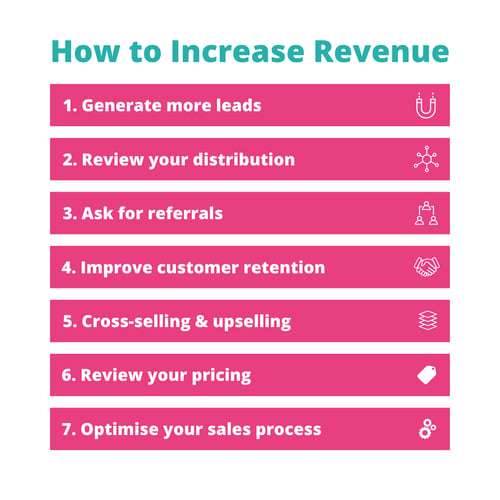 No one is going to dispute that getting a new, unknown product onto a retailer’s shelf isn’t one of the toughest jobs out there. Any sales rep working for a distributor in the retail industry faces a daily gauntlet of challenges to get to the retail buyer, the decision maker with the power to turn unknown products into household names. Those daily challenges often require ‘marketing’ to overcome – sampling, a product profile, sales presenters, a cold call and a presentation. Any distributor can do that. What differentiates the truly successful distributors is their thorough understanding of the role marketing can play in contributing to the company’s bottom line.
No one is going to dispute that getting a new, unknown product onto a retailer’s shelf isn’t one of the toughest jobs out there. Any sales rep working for a distributor in the retail industry faces a daily gauntlet of challenges to get to the retail buyer, the decision maker with the power to turn unknown products into household names. Those daily challenges often require ‘marketing’ to overcome – sampling, a product profile, sales presenters, a cold call and a presentation. Any distributor can do that. What differentiates the truly successful distributors is their thorough understanding of the role marketing can play in contributing to the company’s bottom line.
By Pedro Miguel Casimiro, Regional Director
How much money are you leaving on the table?
Any marketing strategy should always begin with this question, “How much money are we leaving on the table?”
In finding the answer, pretty soon you’ll get to the sales process. Sales reps are not ‘the sales process’. The sales process is your sales funnel – the path your customers take on the way to purchasing your products. Your sales funnel exists whether you are aware of it or not. If you are aware of it, you will have much more influence over it. Each of your sales funnel stages has an impact on sales and affects the retailers’ buying decisions. If your current sales funnel is a non-performing sales team with excuses ranging from ‘the price is the problem’ to ‘they aren’t taking any new products at the moment’, your business is leaving hundreds of thousands of Rands on the table. But if your sales funnel includes knowing who your customers are, what they are looking for and what they will pay a premium for, you’re in good shape because this knowledge will allow you to craft a funnel that includes an up-to-date database, an exploration of new sales channels, built-in cross-selling platforms and proof of demand for the products you are selling.
Not every product needs to end up on a traditional retailer’s shelf.
This sales funnel needs to be ‘built-in’ to the operational processes of your company. How is your database being captured? Is this a sales team function or an admin function? How is the database being used? Are you segmenting it so that buyers are only receiving content and new product information for products that are relevant to them or are they being ‘spammed’ with irrelevant information leading to a backlash towards any sales efforts? What new sales channels are you exploring? Not every product needs to end up on a traditional retailer’s shelf. A number of buying and selling entities exist between manufacturers and consumers. Interrogating these channels will allow you to investigate alternative sales opportunities like online retailers. This channel interrogation will also allow you to understand your sales process. Looking at factors such as density – the amount of retail stores in the geographical areas you are targeting or variety – the number of different types of outlets that could stock the items you are selling and even novelty – online retailers, vending machines, farmer’s markets, etc. will allow you to develop a strategic understanding of how to optimize your sales and marketing efforts.

 Proactive selling requires your sales team to learn about potential clients and the competition that is working hard to gain the market share.
Proactive selling requires your sales team to learn about potential clients and the competition that is working hard to gain the market share.
Skilled distributors make concerted efforts to measure and monitor profitability across every stage of the sales funnel. An investment in technology allows for data to be collected both before the sale and after the sale. This data prevents reactive selling and creates a proactive sales system. The problem with reactive selling is that sales reps are waiting for a lead or responding to a request from a client. Proactive selling requires your sales team to learn about potential clients and the competition that is working hard to gain the market share. They need the best information possible to create the most effective sales pitch possible which will prove to their customers that they can provide them with solutions in ways they haven’t even thought of. This is the best ‘marketing’ you can do to grow your businesses bottom line.
 If your distribution business views marketing’s role as a provider of a ‘cool’ sales presenter, eye-catching POS or a fun sampling concept, you are leaving thousands of Rands on the table.
If your distribution business views marketing’s role as a provider of a ‘cool’ sales presenter, eye-catching POS or a fun sampling concept, you are leaving thousands of Rands on the table.
An experienced marketing professional will start by looking at your businesses P&L. Both profit and loss are results of how well your internal structures are working. Once a marketer understands how these structures can be optimised to offer increased value to your clients—a highly competitive pricing strategy and diversified distribution channels ensuring multiple revenue streams—you will have a business differentiator that will form the foundation of a successful marketing campaign—great and competitive content that will make your sales presenters, sampling campaigns and sales presentations highly compelling and competitive. In a tough economy this can mean the difference between making it or not.




